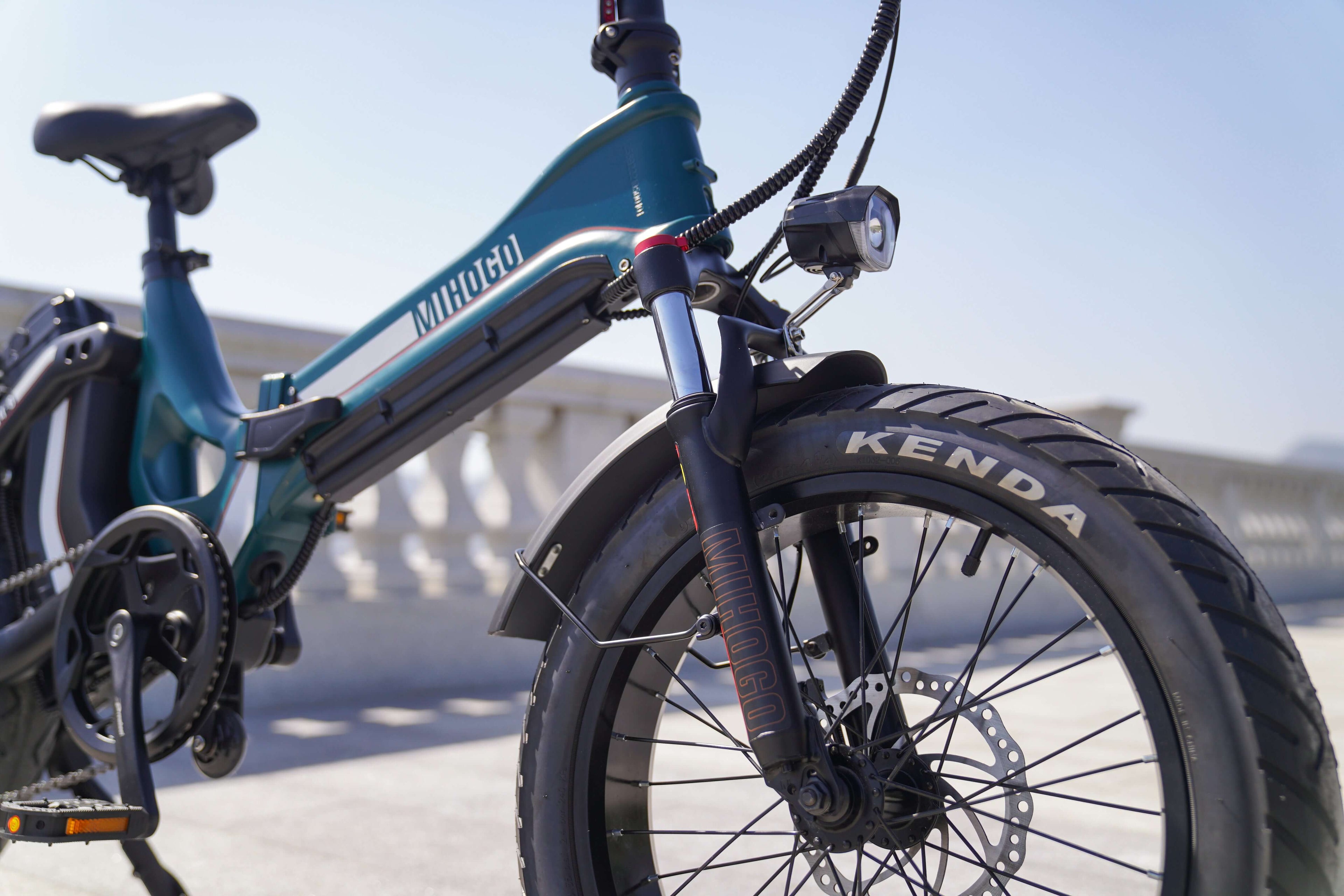Spring: Awakening Your E-Bike After Winter
Spring E-Bike Maintenance Checklist
Spring marks the perfect time to give your e-bike a comprehensive health check after months of winter storage or harsh weather riding. After months in storage, your brakes may feel different — they could be too tight, too loose, or show signs of wear, making a thorough inspection crucial for safety.
Battery Revival Tips
- Check battery charge level (should be 40-70% if properly stored)
- Inspect battery terminals for corrosion or damage
- Allow battery to reach room temperature before charging
- Test range on a short ride to assess winter impact
Tire and Brake Inspection Whether you have a RadWagon cargo ebike or a RadRover fat tire ebike, if your bike has been in storage, your tire pressure has likely dropped. Check PSI levels according to manufacturer specifications and inspect for winter damage including cracks, dry rot, or embedded debris.
Chain and Drivetrain Care Spring cleaning extends to your drivetrain. Your chain is the heart of your ebike's drivetrain, and after months in storage, it may be dry, dirty, or even rusty. Apply high-quality bike chain lubricant and wipe excess to prevent dirt accumulation.
Summer: Beating the Heat While Maximizing Performance
Hot Weather Battery Management
European summers can be intense, with temperatures soaring across the Mediterranean regions. Lithium-ion e-bike batteries, the most common type in ebikes, perform best in moderate temperatures, typically between 60°F and 80°F.
Smart Parking Strategies
- Seek shaded parking areas whenever possible
- Avoid leaving e-bikes in direct sunlight for extended periods
- Remove battery and store indoors during extreme heat
- Plan Your Route: Opt for shaded paths or streets with less direct sunlight exposure to keep both the bike and rider cool
Optimal Riding Times Ride During Cooler Hours: Early mornings or late evenings are cooler and more comfortable for both you and your e-bike. This strategy not only protects your equipment but enhances your riding experience during Europe's beautiful summer evenings.
Summer Maintenance Priorities
- Monitor tire pressure more frequently as heat causes expansion
- Check brake performance regularly as heat affects brake pad efficiency
- Inspect electrical connections for heat-related wear
- Use UV-protective sprays on your e-bike's frame to prevent color fading and material degradation
Autumn: Preparing for Changing Conditions
Weather Transition Strategies
Autumn in Europe brings unpredictable weather patterns, from sunny days in southern regions to early frost in northern countries. Spring is unpredictable. One minute it's sunny, the next minute it's pouring. Carry a light rain jacket, and if possible, add fenders to your eBike to keep you dry when the roads get wet.
Equipment Adjustments
- Install or check fenders for wet road protection
- Ensure lights are functioning for shorter daylight hours
- Consider tire changes for improved wet weather traction
- Waterproof electronics and charging ports
Pre-Winter Preparation Begin preparing your e-bike for winter conditions by applying rust-proof treatments and checking all seals and gaskets for water resistance.
Winter: Conquering European Cold
Battery Care in Cold Conditions
Winter presents the greatest challenge for e-bike batteries across Europe's diverse climate zones. Cold weather can cause temporary capacity loss, reducing the overall range of your ride. In freezing temperatures, a battery may not perform as efficiently and could drain faster than usual.
Essential Winter Storage Tips
- When not in use, keep your battery in a warm, dry place—preferably at room temperature (15-25°C)
- If you aren't planning to ride your e-bike in the winter, be sure to store it indoors and as close to room temperature as possible. You should leave your battery partially charged, rather than fully charged or dead, in order to extend the battery life
- Some brands share ways to optimize your ebike's longevity. A useful tip is the 30-80 rule, as recommended by Ride1Up: keep your battery charged between 30% and 80% most of the time
Winter Riding Safety
- When riding on snowy or icy surfaces, it is important to reduce your speed and brake carefully. This will help you to maintain control of your ebike and avoid skidding
- Consider studded tires for icy conditions
- Lower your seat for better ground contact and control
- We definitely don't recommend riding in deep snow or on icy roads. If you decide to go out in the snow, make sure you do so in the daytime when the snow is not too deep and there is absolutely NO ice
Charging Best Practices Before charging your eBike battery, let it warm up if it has been exposed to the cold. Never charge a frozen battery, as this can cause permanent damage to the cells.
Year-Round Maintenance Schedule
Daily Checks (2-3 minutes)
- Inspect tires for cracks, embedded debris, or abnormal wear. Press the tire by hand to check firmness
- Test brake responsiveness
- Check battery charge level
- Verify lights are functioning
Weekly Maintenance
- Clean and lubricate chain
- Check tire pressure with gauge
- Inspect battery terminals
- Wipe down frame and components
Monthly Deep Inspection
- Use a torque wrench according to your brand's specs (e.g., Bosch motor bolts: 8–10 Nm)
- Test electrical system functionality
- Check for firmware updates
- Inspect brake pads and cables
Seasonal Professional Service Most shops recommend a full inspection every 6 months or 750 miles — whichever comes first. Professional maintenance becomes especially important before challenging seasons like winter or during peak summer riding periods.
European E-Bike Community and Events
The European e-bike community offers year-round support and inspiration. Many European e-bike retailers and manufacturers organize customer events throughout the riding season. These gatherings typically include test ride opportunities, technical workshops, and guided group rides.
Consider joining local e-bike groups through platforms like Meetup or participating in major events such as EUROBIKE Frankfurt or regional cycling festivals to connect with fellow enthusiasts and learn advanced techniques.
Technology Integration for Seasonal Riding
Modern e-bikes feature sophisticated systems that can be optimized for seasonal conditions. Use manufacturer apps like Bosch Flow or Shimano E-Tube to:
- Monitor battery health across temperature changes
- Adjust power settings for seasonal conditions
- Track maintenance schedules
- Access riding mode recommendations
Conclusion: Embracing Four-Season E-Biking
Mastering seasonal e-bike riding transforms your electric bicycle from a fair-weather companion into a year-round transportation solution. By following these evidence-based maintenance practices and safety guidelines, European cyclists can confidently navigate everything from Mediterranean summer heat to Nordic winter conditions.
Remember that proper seasonal preparation not only extends your e-bike's lifespan but ensures every ride remains safe and enjoyable. Whether you're commuting through Brussels rain or touring Tuscany's hills, your well-maintained e-bike will deliver reliable performance across all seasons.






